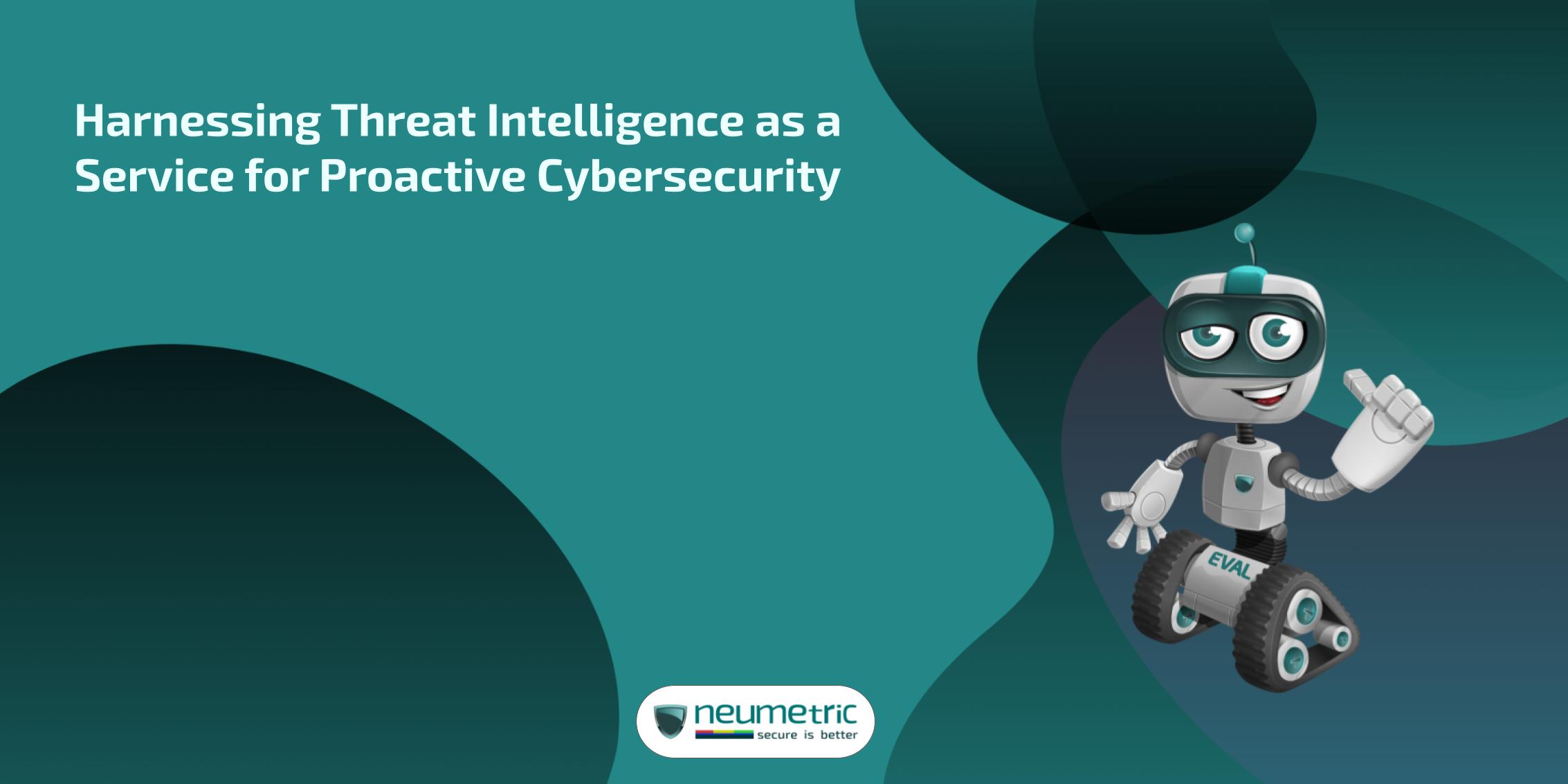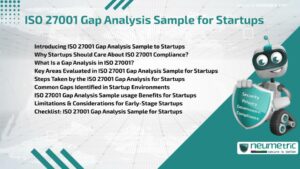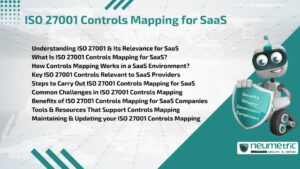Table of Contents
ToggleIntroduction
In today’s rapidly evolving digital landscape, organizations face an ever-increasing array of cyber threats. As attackers become more sophisticated & persistent, traditional reactive security measures are no longer sufficient to protect valuable assets & sensitive information. Threat Intelligence as a Service [TIaaS] is a game-changing approach that empowers businesses to stay one step ahead of potential cyber threats.
This journal delves into the world of Threat Intelligence as a Service, exploring its benefits, implementation strategies & impact on proactive cybersecurity. By harnessing the power of TIaaS, organizations can transform their security posture from reactive to proactive, significantly reducing the risk of successful attacks & minimizing potential damages.
Understanding Threat Intelligence as a Service
What is Threat Intelligence?
Threat intelligence refers to the collection, analysis & dissemination of information about potential or current attacks that threaten an organization’s assets. This intelligence helps security teams understand the nature of threats, their motivations & the techniques used by attackers.
The Emergence of Threat Intelligence as a Service
Threat Intelligence as a Service is a cloud-based solution that provides organizations with real-time, actionable intelligence about emerging threats & vulnerabilities. By outsourcing threat intelligence gathering & analysis to specialized providers, businesses can access a wealth of information & expertise without the need for extensive in-house resources.
Key Components of TIaaS
- Data Collection: Gathering information from various sources, including open-source intelligence, dark web monitoring & proprietary databases.
- Analysis: Processing & contextualizing raw data to identify patterns, trends & potential threats.
- Actionable Intelligence: Providing timely, relevant insights that enable organizations to make informed security decisions.
- Integration: Seamlessly incorporating threat intelligence into existing security systems & workflows.
The Benefits of Harnessing Threat Intelligence as a Service
Enhanced Situational Awareness
By leveraging Threat Intelligence as a Service, organizations gain a comprehensive view of the threat landscape. This increased visibility allows security teams to identify potential risks before they materialize into actual attacks.
Proactive Risk Mitigation
With access to up-to-date threat intelligence, businesses can proactively address vulnerabilities & implement preventive measures. This approach significantly reduces the likelihood of successful attacks & minimizes potential damages.
Improved Incident Response
Threat Intelligence as a Service enables faster & more effective incident response. By providing context & insights into attack patterns, TIaaS helps security teams prioritize threats & allocate resources more efficiently.
Cost-Effective Security
Implementing an in-house threat intelligence program can be resource-intensive & expensive. Threat Intelligence as a Service offers a cost-effective alternative, providing access to advanced capabilities without the need for significant upfront investments.
Scalability & Flexibility
TIaaS solutions can easily scale to meet the changing needs of organizations. As businesses grow or face new threats, they can quickly adapt their threat intelligence capabilities without substantial infrastructure changes.
Implementing Threat Intelligence as a Service
Assessing Organizational Needs
Before adopting Threat Intelligence as a Service, organizations should evaluate their specific security requirements, risk profile & existing capabilities. This assessment helps in selecting the most appropriate TIaaS solution & ensuring seamless integration with current security processes.
Choosing the Right TIaaS Provider
- When selecting a Threat Intelligence as a Service provider, consider factors such as:
- Data sources & coverage
- Analytical capabilities
- Integration options
- Reporting & visualization features
- Customer support & expertise
Integration with Existing Security Infrastructure
To maximize the benefits of Threat Intelligence as a Service, organizations should integrate TIaaS solutions with their existing security tools & processes. This integration enables automated threat detection, streamlined workflows & more effective response actions.
Establishing Metrics & KPIs
To measure the effectiveness of Threat Intelligence as a Service implementation, organizations should define clear metrics & Key Performance Indicators [KPIs]. These may include:
- Reduction in Mean Time To Detect [MTTD] threats
- Improvement in Mean Time To Respond [MTTR] to incidents
- Decrease in false positives
- Increase in prevented attack
Leveraging Threat Intelligence as a Service for Proactive Cybersecurity
Continuous Monitoring & Analysis
Threat Intelligence as a Service provides 24/7 monitoring of the threat landscape, enabling organizations to stay informed about emerging risks & vulnerabilities. This continuous analysis helps security teams identify potential threats before they can cause significant harm.
Predictive Threat Modeling
By leveraging historical data & advanced analytics, Threat Intelligence as a Service can help organizations predict future attack vectors & trends. This predictive capability allows businesses to proactively strengthen their defenses against evolving threats.
Automated Threat Hunting
TIaaS solutions often include automated threat hunting capabilities, which proactively search for Indicators of Compromise [IoCs] within an organization’s network. This approach helps identify hidden threats that may have evaded traditional security measures.
Enhancing Security Operations Center [SOC] Efficiency
Threat Intelligence as a Service can significantly improve the efficiency of Security Operations Centers by:
- Prioritizing alerts based on threat severity & relevance
- Providing context for faster triage & investigation
- Automating routine tasks, allowing analysts to focus on high-priority incidents
Informing Security Strategy & Investment Decisions
By providing insights into the evolving threat landscape, Threat Intelligence as a Service helps organizations make informed decisions about their security strategies & investments. This data-driven approach ensures that resources are allocated effectively to address the most critical risks.
Challenges & Considerations
Data Quality & Relevance
The effectiveness of Threat Intelligence as a Service depends heavily on the quality & relevance of the data provided. Organizations should regularly assess the accuracy & applicability of the intelligence they receive to ensure it meets their specific needs.
Integration Complexity
Integrating Threat Intelligence as a Service with existing security infrastructure can be challenging, especially for organizations with complex IT environments. Proper planning & expertise are crucial to ensure seamless integration & maximum value from TIaaS solutions.
Information Overload
The sheer volume of threat intelligence data can be overwhelming for security teams. Organizations must develop effective processes for filtering, prioritizing & acting on the most relevant intelligence to avoid information overload.
Skills Gap
Effectively leveraging Threat Intelligence as a Service requires specialized skills & expertise. Organizations may need to invest in training or hire additional personnel to fully capitalize on the benefits of TIaaS.
The Future of Threat Intelligence as a Service
As cyber threats continue to evolve, Threat Intelligence as a Service is expected to play an increasingly crucial role in proactive cybersecurity. Some emerging trends in TIaaS include:
- Artificial Intelligence & Machine Learning: Advanced AI & ML algorithms will enhance the accuracy & speed of threat detection & analysis.
- Customized Intelligence: TIaaS providers will offer more tailored solutions to meet the specific needs of different industries & organizations.
- Collaborative Threat Intelligence: Increased sharing of threat intelligence across industries & sectors will improve overall cybersecurity resilience.
- Integration with Emerging Technologies: TIaaS solutions will integrate with emerging technologies such as IoT & 5G networks to address new security challenges.
Conclusion
Harnessing Threat Intelligence as a Service is a powerful strategy for organizations seeking to adopt a proactive approach to cybersecurity. By leveraging real-time, actionable intelligence, businesses can stay ahead of emerging threats, improve their incident response capabilities & make informed decisions about their security investments.
As the cyber threat landscape continues to evolve, Threat Intelligence as a Service will play an increasingly critical role in helping organizations protect their assets & maintain a strong security posture. By embracing TIaaS & integrating it effectively into their security operations, businesses can transform their cybersecurity strategies from reactive to proactive, significantly reducing the risk of successful attacks & ensuring long-term resilience in the face of ever-changing threats.
Key Takeaways
- Threat Intelligence as a Service provides real-time, actionable insights about emerging cyber threats & vulnerabilities.
- TIaaS enhances situational awareness, enables proactive risk mitigation & improves incident response capabilities.
- Implementing Threat Intelligence as a Service requires careful assessment of organizational needs & integration with existing security infrastructure.
- Leveraging TIaaS for proactive cybersecurity involves continuous monitoring, predictive threat modeling & automated threat hunting.
- Challenges in adopting Threat Intelligence as a Service include ensuring data quality, managing integration complexity & addressing potential skills gaps.
Frequently Asked Questions [FAQ]
What is the difference between threat intelligence & Threat Intelligence as a Service?
Threat intelligence refers to the general practice of gathering & analyzing information about potential cyber threats. Threat Intelligence as a Service is a specific delivery model where this intelligence is provided by a third-party vendor through cloud-based platforms, offering scalability, real-time updates & expert analysis without the need for extensive in-house resources.
How does Threat Intelligence as a Service improve cybersecurity?
Threat Intelligence as a Service enhances cybersecurity by providing organizations with real-time insights into emerging threats, enabling proactive risk mitigation, improving incident response times & informing strategic security decisions. It helps organizations stay ahead of potential attacks & adapt their defenses to evolving threats.
Is Threat Intelligence as a Service suitable for small & medium-sized businesses?
Yes, Threat Intelligence as a Service can be beneficial for small & medium-sized businesses. TIaaS offers a cost-effective way to access advanced threat intelligence capabilities without the need for significant upfront investments in infrastructure & personnel. Many providers offer scalable solutions that can be tailored to the needs & budgets of smaller organizations.
How can organizations measure the ROI of implementing Threat Intelligence as a Service?
Organizations can measure the ROI of Threat Intelligence as a Service by tracking metrics such as reduction in Mean Time To Detect [MTTD] & Mean Time To Respond [MTTR] to incidents, decrease in successful attacks, improvement in threat prevention rates & overall reduction in security-related costs. Additionally, the ability to prevent potential high-impact breaches can be factored into ROI calculations.
What are the key considerations when choosing a Threat Intelligence as a Service provider?
When selecting a TIaaS provider, organizations should consider factors such as the breadth & quality of data sources, analytical capabilities, integration options with existing security tools, reporting & visualization features, scalability & the provider’s industry expertise. It’s also important to evaluate the provider’s track record, customer support & ability to deliver actionable intelligence relevant to your specific industry & threat landscape.





